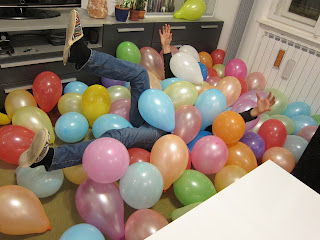 |
| 地図がなんか変?! Something is wrong with directions... |
Rastoke村、なんといっても村の中を豪快に流れる滝が見ものなんですが、冬でも凍らずに勢いよく滝が流れてました。この時期になると観光客もちらほら、という感じなのでものし~んと静まり返った中、滝の音と雪を踏みしめる音だけが聞こえてきます。
Rastoke村に入るのに何やら入場料なるものが必要、と看板に書いてあったのですが、冬のせいか誰もいなかったのでそのまま入場・・・。そしてその入口近くになんだか変な看板を発見?! よ~く見ると、ザグレブの位置が、妙なところに書いてあるんです(^ ^;) ザグレブがロンドンとシカゴの間のはずはないですね。Rastoke村から見たら、ザグレブってモスクワに行く途中なんですけどね・・・。たぶん、距離さえあってればいいだろう、なんていう考えだったんでしょうかね。あんまり細かいことを気にしないクロアチア人の性格がよく表れているというか。オーストラリアでもここまで適当じゃなかった。でもクロアチア人のこういう適当なところ、案外好きだったりします。笑いを誘ってくれるというか・・・。
Rastoke村は、湖の上に、滝の流れを邪魔しないように家々が建っているという感じ。なので、家の床の下を勢いよく水が流れていたりします。村に入ってすぐのところにカフェもあるので、滝の音に耳を澄ませながらコーヒーを楽しむこともできます。途中、村の一角で水車の力で石臼を回して小麦粉を引いているおばあちゃんがいました。 言えば、小麦粉やトウモロコシの粉など、数クーナで売ってくれるみたい。
夏の青々したRastoke村も、ものすごく爽やかできれいだったけど、冬のRastoke村もまた別の魅力があって楽しめました。
 |
| ラストケ村 Rastoke Village |
Attraction of Rastoke village is its breathtaking nature. It looks like that the village was established upon the small lake and waterfalls. Even in winter, the waterfalls were not frozen and water were dynamically flowing. I also saw that the water slooshing under the houses. Listening to this nature sound, the flow of water and the waterfalls, in this peaceful atmosphere was very very relaxing. I didn't go, but there is a small cafe at the very entrance of the village. I think it would be really good to have a time to sit there and enjoy the beautiful landscape while having coffee :)
 When I visited the village, there were only a few visitors. So, it was very peacefully quiet. Only the sound of the waterfalls and our steps crunching snow echoed in this silent village.
When I visited the village, there were only a few visitors. So, it was very peacefully quiet. Only the sound of the waterfalls and our steps crunching snow echoed in this silent village.There is "another" entrance of the village across a big bridge behind the village. The board says that we have to pay to entre the village, but there is no one there. So, we just entered the village. At the entrance, we found a weirdly directed map (the first photo). Did you find out what was wrong with that map? Well, Zagreb is located in a weird position. Zagreb can't be located between London and Chicago... From Rastoke village, Zagreb is more like on the way to Moscow. Hmmm, maybe they don't care about the directions but just wanted to show how distanced to each city. I kinda like this characteristics of Croats not caring much about details. They sometimes give us some good laugh (like the map above!) :P

































